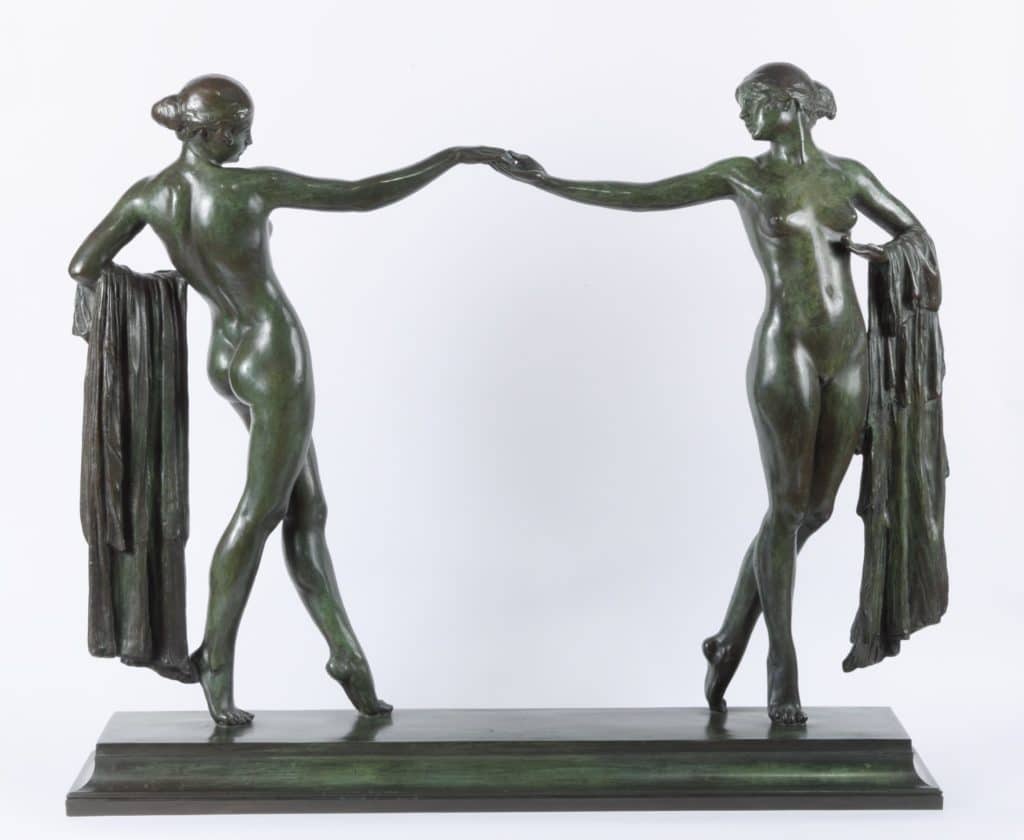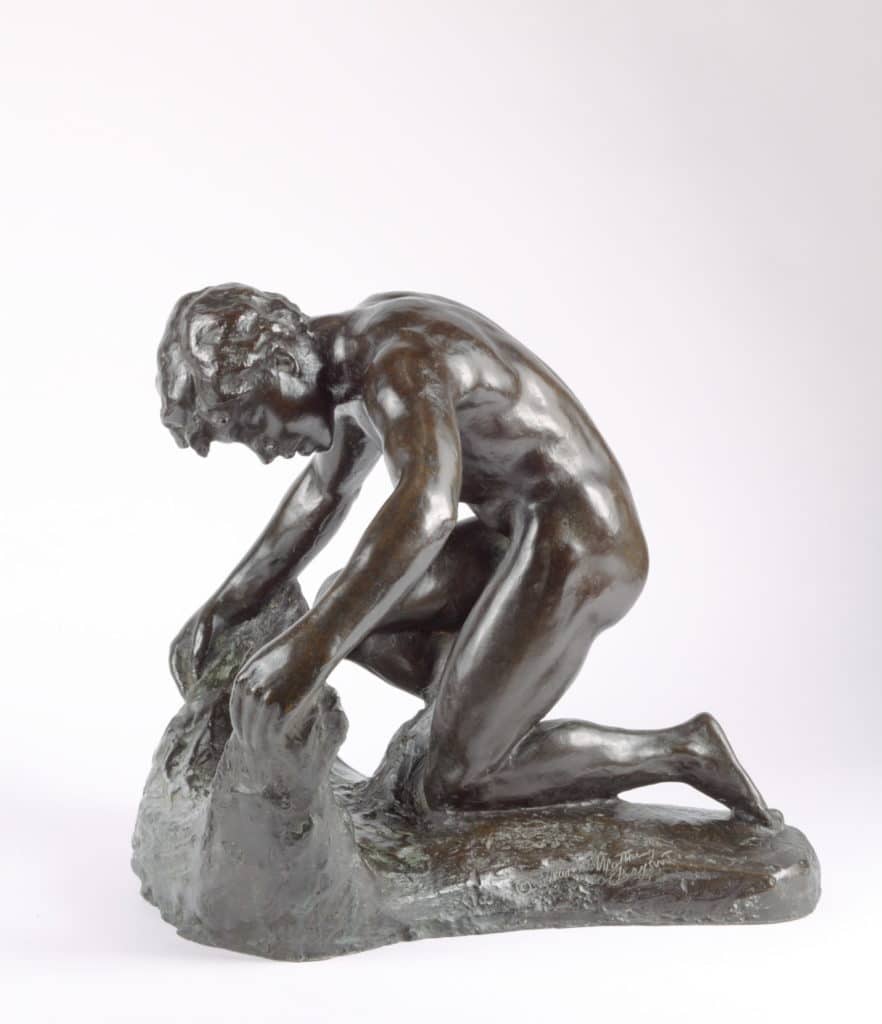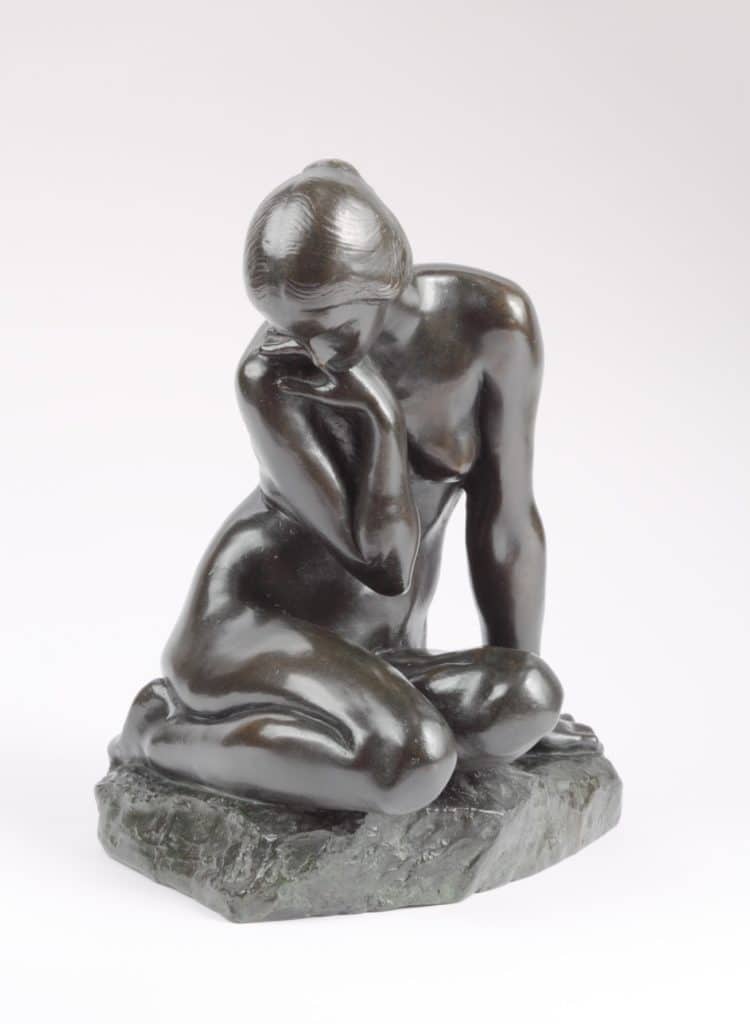
A dynamic range of 57 American sculptures from the collection of Dr. Michael L. Nieland compose a current exhibition in Pennsylvania. Which late 19th and early 20th century artists are represented?
In 2015, Dr. Michael L. Nieland made a transformational gift to the Westmoreland Museum of American Art in Greensburg, Pennsylvania: nine incredible sculptures from many of America’s greatest sculptors. An additional 48 pieces are slated to be given in 2018. Now, the institution is celebrating the gift by exhibiting the works in “A Timeless Perfection: American Figurative Sculpture in the Classical Spirit.”

The show will include all 57 sculptures to become part of the museum’s permanent holdings. Among the artists included in the show are John Talbott Donoghue, Harriet Whitney Frishmuth, Malvina Hoffman, Mario Korbel, Boris Lovet-Lorski, Adolph Alexander Weinman, Paul Wayland Bartlett, Walker Hancock, and Frederick MacMonnies.

According to the museum, “While the collection is entirely figurative and primarily comprised of sculpture, book ends, candleholders, vases, and inkwells add a utilitarian aspect to it. The gift also includes 40 pieces of medallic art designed by some of the same artists and produced by the Society of Medalists and American Numismatic Society, further broadening the scope of the Museum’s collection. All of the utilitarian pieces and medallic art gifted by Dr. Nieland will be included in the exhibition.

“A remarkable new generation of academically trained American sculptors emerged during the late 19th and early 20th centuries. At the height of the Gilded Age, they achieved widespread critical and commercial success for works created on public commission as well as for private patrons. Working on both grand civic platforms and on a more intimate, domestic scale, they transformed the art of American sculpture. New York City was at the heart of the transformation, but other major American cities, including Chicago, Baltimore, Philadelphia, and Boston, provided encouragement, support, and venues. Surprisingly and unfortunately, the flowering of these artists was relatively brief, and amid rapidly changing aesthetics in the 20th century, the reputations of many of these sculptors dimmed. Despite increased interest in their work in recent decades among scholars, curators, and collectors, their careers, achievements, and even their names, once famed, are now recalled only narrowly.

“‘This outstanding collection gives us an opportunity to rediscover another dimension of modern American art from the late 19th century into the first half of the 20th century,’ states Barbara L. Jones, Chief Curator and organizer of the exhibition. ‘By exploring the lives and aesthetic achievements of these sculptors, the exhibition will expand awareness and deepen the public’s knowledge of this extraordinary era of American sculpture, in addition to bringing overdue recognition to these artists.’

“‘This is the third transformational gift of art to be received by The Westmoreland as a result of our recently completed campaign. With works ranging from six to nearly 60 inches in height, this stunning collection provides diversity in the arena of American figurative sculpture and complements works already in our collection,’ says The Richard M. Scaife Director/CEO Judith Hansen O’Toole of the extraordinary gift from Dr. Nieland.
“Dr. Nieland describes the works of art in this collection as, ‘in part, depicting the beauty of the human body, a central focus of art since the beginning of time.’ He further states, ‘Altogether, the works reinforce the poetic assertion in Genesis (1:27) that the human form, male as well as female, represents the image of The Creator. Sensuality is implicit in these pure and refined objects, but utilization or exploitation of the human form for other purposes can border upon the salacious.’ Regarding his decision to gift the works to the Museum, he says, ‘The Westmoreland with its devotion to American art is a perfect fit for this collection. Our good fortune to have possessed these beautiful sculptures presents us with the opportunity and obligation to pass them on. Someone owned them before us and inevitably the time arrives to look to their preservation and conservation in the hands of others. I am thrilled that my treasures have found a new home in The Westmoreland Museum of American Art.’”

“A Timeless Perfection: American Figurative Sculpture in the Classical Spirit” continues through December 31. To learn more, visit The Westmoreland Museum of American Art.
This article was featured in Fine Art Today, a weekly e-newsletter from Fine Art Connoisseur magazine. To start receiving Fine Art Today for free, click here.






